
views
- Feel the stone beneath your fingers—real opal won’t have any extra pigment or paint coating the surface.
- Real opal won’t look especially shiny under a light; if it appears this way, it might be made of plastic or resin.
- See if the opal can be scratched by a knife, a glass plate, or a steel nail.
Signs Raw Opal Is Genuine

The common opal creates a soft glow. Opals can be classified into two major categories: common and precious. Precious opals are known for producing a special, iridescent color effect (thanks to the unique structure of the stone), while common opals lack this special quality. Still, the common opal creates a gentle glow when held under the light.

The precious opal has special play-of-color features. Unlike many other gems and minerals, precious opal has a unique feature known as “play-of-color.” This gives the stone the illusion that it has a myriad of colors inside, even if it’s just a trick of the light. Hold up your raw opal and try looking at it from different angles—a genuine precious opal will show off some play of color. From a structural standpoint, opals are made of a variety of tiny spheres put together in a sort of grid. When the light enters this grid of spheres, the rays of light bend and split off into different colors, creating the unique and iconic color phenomenon that precious opals are best known for. Common opals are made up of larger or smaller spheres (or a smaller number of spheres), which prevents them from having the same opalescence.
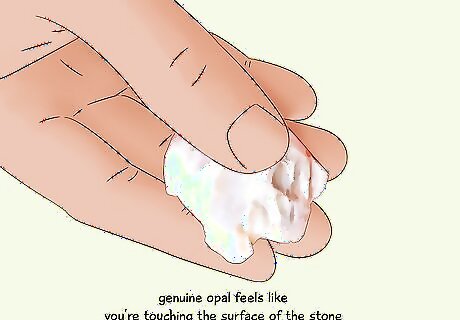
The surface is durable and paint- or pigment-free. Like any genuine gem or mineral, genuine raw opal won’t have any paint or pigment on the surface that modifies the color. Give your opal a quick rub-down with your fingers and see how it feels; if it feels like you’re touching the surface of the stone, you could be handling a genuine opal.
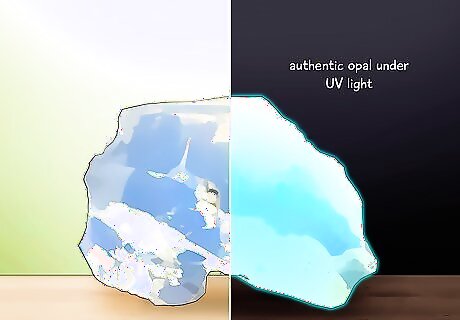
The inside of the opal has good clarity under UV light. Authentic opal has a bright, luminescent appearance when it’s held up under a UV light; if the color looks muddy or faded, it might not be the genuine article. Synthetic opals are well-known for looking less luminous and bright with UV light. Keep in mind that outside of a raw opal may look muddy and dirty if isn’t polished or cut by a professional. It’s important to look at what’s inside of the stone. Use caution with this test, since bright light can lead to fracture lines appearing within the opal.

The surface of the stone is completely soot-free. Some manufacturers give their opals extra artificial treatments, like smoking or sugar treatments—soot marks can be indicative of this. So, if you see soot traces on the stone, the opal might not be the real deal (and it definitely isn’t raw).
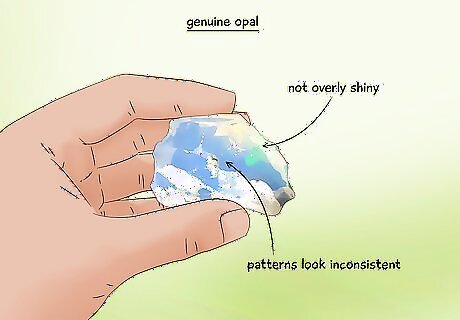
The stone is lustrous without looking overly shiny. Knock-off opals are often crafted with materials that have a super shiny surface, like resin or plastic. When you hold up such an opal, it’ll look especially shiny and reflective, unlike a genuine stone. The special patterns on the inside will also look organized and consistent, which isn’t representative of a genuine opal. Pro tip: This isn’t always a viable option depending on where you’re shopping, but it’s possible to feel with your teeth if an opal is plastic or not.
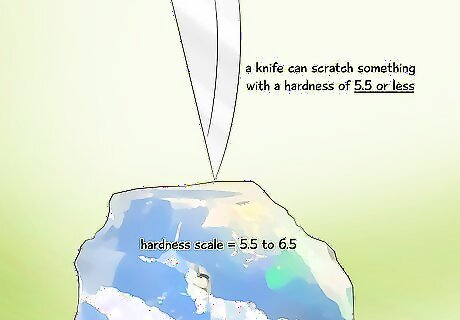
The surface can be scratched by a knife or steel nail. In the world of geology, the Mohs hardness scale uses a scale of 1 to 10 to determine how hard a gem or mineral’s surface is (with talc being a 1 and diamond being a 10). Opal falls somewhere in the middle, with a 5.5 to 6.5 rating. A knife or glass plate can scratch something with a hardness of 5.5 or less, while a steel nail can scratch anything less than 6.5. If you’d like to be extra certain, try scratching the surface with a copper penny, which can only scratch gems/minerals with a 3.5 hardness or less.

The opal was mined in Australia. If you’re buying the rock from a seller, ask where the opal was sourced from—historically speaking, Australia is one of the most well-known opal mining locations on the planet, although their resources are starting to decline. Still, it’s a good sign if your opal was originally mined in Australia, as that could be a sign that your stone is the genuine artifact. Some other countries well-known for the opal mining operations include: Brazil Honduras Ethiopia Czech Republic and Slovak Republic Indonesia
Types of Common Opal
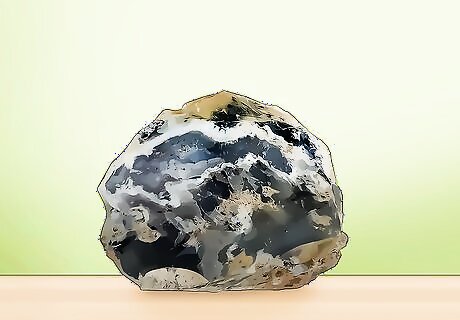
Agate opal Agate opals tend to have a banded pattern throughout the stone. However, as a type of common opal, they lack the iridescence and play-of-color that precious opals are known for.

Moss opal Moss opal contains manganese oxide within the stone—this is an impurity that creates the illusion of moss inside of the opal. Opal can be found with other substances like fossils and sandstone.
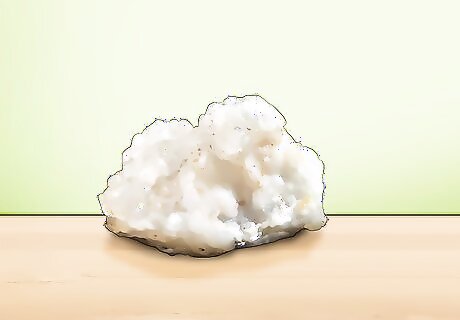
Hyalite Most common opals are opaque, but hyalite is unique in that it's more translucent. Although translucent opals are usually considered precious opals, the main thing that sets hyalite opal apart from other common opal is its bulbous clusters called "globules." This opal forms in volcanic rock or in ore deposits.
Types of Precious Opal
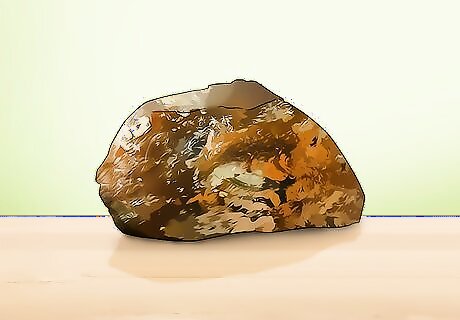
Boulder opal Like the name implies, a boulder opal is a type of opal that’s attached/connected to an existing rock. This opal variety almost mimics a geode (minus the pointy, crystallized interior that geodes are known for) and can have especially beautiful and vibrant play-of-color features.
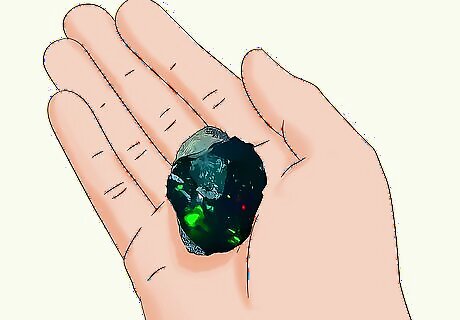
Black opal Black opals have a dark backdrop, which makes it is easy to spot the play-of-color features beneath the surface. Gem enthusiasts also tend to view black opals as rarer than their white counterparts.
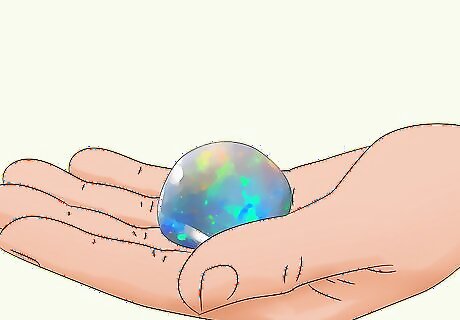
Crystal opal Crystal opal tends to be on the translucent side and features a wide play of colors when held up to the light.

Fire opal Fire opals typically have a warmly-toned background color, like red, orange, or yellow. Some of them have a play-of-colors feature, while others don’t. Alternative: Common opal with a distinct orange-red color is also known as fire opal.

Water opalWater opals are either clear or void of color but have a distinct play-of-color feature within.
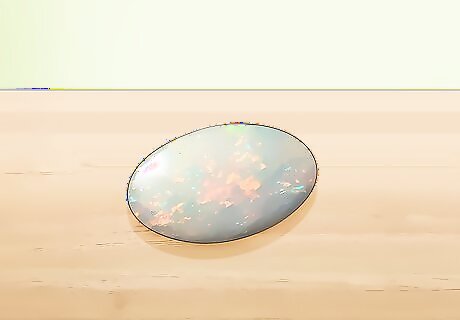
White opal White opals boast an entirely white backdrop but have a play of color interspersed within the gem.
Basic Opal Characteristics
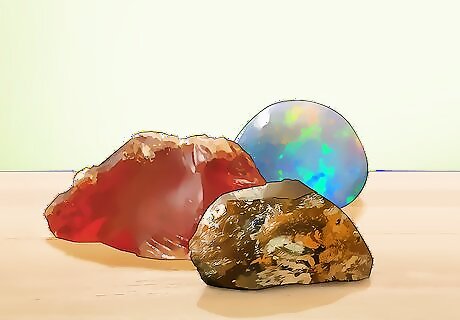
Opal can come in a variety of colors. Unlike certain gemstones like sapphires, emeralds, and rubies, which are well-known for being a singular color, opals can come in countless different colors. In the case of precious opals specifically, these background colors are complemented with a special play-of-color feature. Known opal colors: Colorless, white, orange-red, opaque white, pink, green, blue, yellow, brown, and more

Opals can appear clear or opaque. Some opals have a more translucent background, while others look more opaque—with this in mind, the clarity of the opal isn’t always the best identifier. In fact, gem enthusiasts often prefer certain opacities for certain types of opals. For instance, a transparent opacity is preferred for the crystal precious opal variety, while a more opaque backdrop is desired for black precious opals.
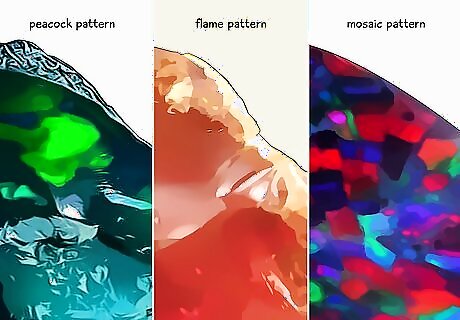
Opals can come in a variety of unique patterns. Few gems and minerals offer the range of natural designs and patterns that genuine, raw opals do. Some of the most popular pattern variations include: Peacock: An tail-like pattern that features distinct colors like blue and green Palette: A splatter-like pattern with various splashes of color, similar to a messy paint palette Flame: A distinct pattern of fiery red lines Fernleaf: A lace-like pattern that’s similar to a fern leaf (often on a green stone) Mosaic: Tight-knit squares/patches of colors set closely together Chinese script: Cursive-like lines of color that mimic a Chinese character (often green and gold)


















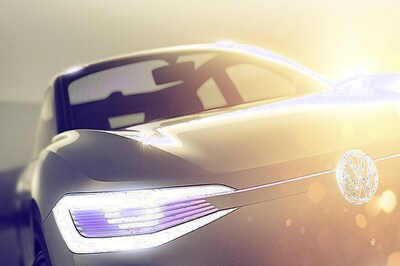

Comments
0 comment